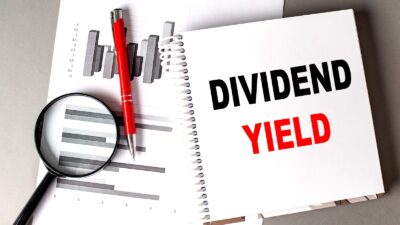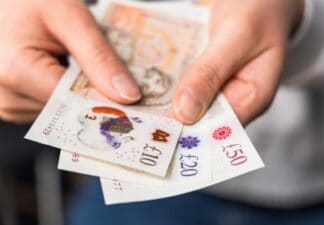High-yield stocks have always been in fashion. However, given the surge in inflation as we’ve come out of the pandemic, more and more investors are searching for higher-yielding options. If I had £1k that I wanted to put to work right now purely focused on this area, here’s what I’d do.
Filtering down from the top
There’s no industry standard parameter that sets apart a dividend share as high yield. Yet in order for me to pick stocks, I need to apply some filters. I believe a logical place to start is filtering out stocks that have a yield below the current rate of inflation. From the latest reading this week, that eliminates income shares below 6.8%.
I’m also going to cut off any stock that yields above 10%. This might sound odd, but it relates to the sustainability of the dividends. Sure, I want to squeeze the most out of the lemon. But what’s the point in purchasing a stock with a crazy 15% yield only for it to be cut at the end of the year? That doesn’t make sense.
Passive income stocks: our picks
Do you like the idea of dividend income?
The prospect of investing in a company just once, then sitting back and watching as it potentially pays a dividend out over and over?
If you’re excited by the thought of regular passive income payments, as well as the potential for significant growth on your initial investment…
Then we think you’ll want to see this report inside Motley Fool Share Advisor — ‘5 Essential Stocks For Passive Income Seekers’.
What’s more, today we’re giving away one of these stock picks, absolutely free!
So my pool of options consists of shares in the 6.8-10% bucket. Given the FTSE 100 average dividend yield is 3.84%, these are comfortably high-yield plays.
When I consider both the FTSE 100 and the FTSE 250, there are 41 shares to choose from.
Delving deeper to diversify
Next I’d break that number down into even smaller categories. I’d split the ideas up into sectors and geographies. This is aiming to diversify my portfolio so that I’m not overly exposed to one particular area of the stock market.
If I was and the sector had a terrible year, I could find my dividend income significantly reduced.
With the £1k, I’d aim to have 10 stocks each with £100 invested. I’d want a maximum of two from any sector, ideally with worldwide sales.
Specific examples I like
One sector I’d include is financial services. Higher interest rates have boosted the profit margins for banks. Yet it has also helped asset managers as investors look to use them to try and generate returns.
With the recent share price tumble, I’d use it as an opportunity to buy Abrdn shares. The current dividend yield is 8.39%. Even though assets under management has fallen this year, I think the worst of its transformation is over. When looking out for years to come, I feel the company could do well.
From the FTSE 250, I’d buy the Sequoia Economic Infrastructure Fund, with a yield of 8.33%. The stock has a strong history of paying out quarterly dividends. The price is trading at a 13% discount to the net asset value of the investments within the fund. Therefore, in the long run, this should correct, meaning the share price should rise.
If I had the £1k right now, I’d buy the two above stocks and replicate my thinking across other sectors to build up a good high-yield portfolio.








